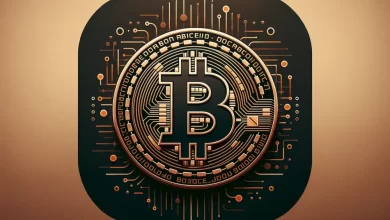Bitcoin turns 15: Tracing the journey of the first cryptocurrency

- Bitcoin’s adoption has reached incredible heights.
- Experts believe that the ETF, alongside the halving, would have a good impact on BTC’s price.
“It’s Halloween. Everyone’s entitled to one good scare.” This Sheriff Leigh Brackett quote was supposed to be the mood for a large part of the world on 31 October 2008, and of course, many were in the spirit.
Read Bitcoin’s [BTC] Price Prediction 2023-2024
However, not many would have imagined that the “good scare” would be the historical Bitcoin [BTC] whitepaper.
Satoshi starts the crypto revolution
For the anonymous Satoshi Nakamoto, there was no better time to introduce the world to this financial technology than when they were in celebration mode. Approximately 15 years ago, Satoshi introduced the Bitcoin whitepaper.
Using a cryptographic mail [email protected], the inventor(s) noted that Bitcoin was a better way of using money, explaining that:
“What is needed is an electronic payment system based on cryptographic proof instead of trust, allowing any two willing parties to transact directly with each other without the need for a trusted third party.”
The creator described Bitcoin as a peer-to-peer electronic payment system capable of solving challenges faced with transactions in the commerce industry and other sectors.
To back up the idea, the creator talked about the Proof-of-Work (PoW), which is still the consensus mechanism of the Bitcoin network to date.
PoW is the decentralized mechanism responsible for adding new blocks of transactions on the Bitcoin blockchain. It also serves as the backbone of validating transactions on the network.
After the 31 October 2008 whitepaper release, Satoshi made further communications about the project.
Last discussion and rising growth
For instance, on 10 December 2008, Satoshi sent an email welcoming a few users to the Bitcoin mailing list. However, it was not until 8 January 2009 that the inventor shared the codebase with the Bitcoin community.
In its early days, Bitcoin faced a lot of challenges as regards adoption. However, the 2008 financial crisis helped increase the number of participants who were willing to adopt technology that seemed to be a better long-term alternative to traditional assets and banks.
One of the first adopters of Bitcoin was the late American software developer Hal Finney. Finney, who was clearly curious about financial technology, made a purchase of 10 BTC.
At press time price, that would have been worth $344,970. But that was not the case in 2017.
During that period, 1 BTC was worth around $6,000. But now, there are 1.20 billion addresses within the Bitcoin network (at press time), according to Glassnode. So, one can conclude that “tiny drops of water” have ended up being a “big ocean” for Bitcoin.

Source: Glassnode
Bitcoin spreads its wings across the board
In celebration of the blockchain’s 15th birthday, AMBCrypto spoke to some experts about the impact Bitcoin has had, and other subjects related to it. The first on the list was Robert Quartly-Janeiro.
Quartly-Janeiro is the Chief Strategy Officer (CSO) at Bitrue, a cryptocurrency exchange based in Singapore. The Bitrue executive admitted that the invention of Bitcoin laid the foundation for the crypto economy currently enjoyed. He said,
“The release of the Bitcoin whitepaper marked a pivotal moment in the development of the cryptocurrency field, igniting a surge of creativity and investment. This led to the birth of numerous new digital currencies.”
Another person who commented on the 2008 whitepaper release was Mohammed AlKaff AlHashmi, co-founder of HAQQ Network.
AlHashmi, responding to AMBCrypto’s question about how significant the project has been, said that the release of the codebase was a monumental milestone.
Negative effects on the environment decrease
The HAQQ Network co-founder also highlighted how Bitcoin has been instrumental in several industries, from remittance to asset management. One area Bitcoin has shown its presence is in terms of its effect on the environment.
This is because of the mining activity that is supposed to keep the Bitcoin network running. Data from on-chain analytic platform Glassnode showed that Bitcoin has not necessarily become too expensive when compared to the cost of mining.
This was the result shown by the Bitcoin hash ribbon. The metric indicates that the worst of the miner capitulation is over when the 30d MA of the hash rate crosses above the 60d MA (switch from light red to dark red areas).
When the metric switches from dark red areas, it means miners are spending more operationally. At the time of writing, the former was the case. The condition could be linked to the way miners have adopted alternative sources of power for their operation.

Source: Glassnode
AlHashmi also talked about this aspect. According to him, the emergence of the lightning network has been instrumental in reducing the adverse effects of Bitcoin mining on the environment.
The Lightning Network is a second layer for the Bitcoin blockchain. It also serves as a way to speed up transaction times and decrease congestion on the network. With regard to this, the HAQQ network co-founder said:
“Innovations like the Lightning Network are making strides in reducing its environmental footprint. Also, BTC miners now started using different energy sources like gas flaring, so it helps at the same time to save resources and reduce emissions.”
New experiments on the network
Another innovation that describes how Bitcoin has evolved is Bitcoin Ordinals. Normally, Bitcoin was not built to host Non-fungible Tokens [NFTs] on its network. But an experiment in the first half of 2023 brought Bitcoin Ordinals to life.
Bitcoin Ordinals are digital artifacts inscribed on the blockchain as digital content. Earlier in the year, the adoption of these inscriptions skyrocketed and caused clogging on the Bitcoin network.
For Ryan Lee, Bitget’s chief research analyst, trying out things that do not align with the project fundamentals is not a bad thing. Lee referred to Stacks [STX], a layer-2 project operating on the Bitcoin network.
The analyst mentioned new capital inflows would flow into the Bitcoin ecosystem going into 2024, and these projects linked to it would benefit. He explained:
“New capital inflows and increased speculative activity are expected in the coming months. This could lead to sector rotation.”
A spot ETF may lead BTC to the top
Lee mentioned that the likelihood that a Bitcoin ETF would be approved was enough reason for the market to be in a bear-to-bull transition. Lately, BTC has put on an incredible performance as the narrative around the spot ETF continues to build up.
However, the current speculation and trend still seem far off the $69,000 the coin hit in 2021. Regardless of that, many analysts argue that BTC would surpass its previous All-Time High (ATH) after the 2024 halving.

Source: Santiment
Bitcoin halving occurs every four years. During this time, miners’ rewards are cut in half as written by the halving policy in the Bitcoin algorithm. In 2024, miners would get a reward of 3.125 BTC.
Historically, the halving has proven to be vital to BTC’s price increase. According to Lee, the trend might not change as 2023 nears its end. However, he opined that the market momentum in Q4 2023 may not be as impressive as the previous quarters, leading to the halving.
Is your portfolio green? Check out the BTC Profit Calculator
Lee said,
“The FOMC meetings in November and December will also set the tone for decisions regarding interest rate hikes and the duration of elevated interest rates. Bitcoin has the potential to break above its recent high of around $32,000 in early 2024, with key levels to watch above at $34,000, $38,000, and $42,000.”
He, however, noted that 2024 might be a much better year because of the likely positive declarations like the ETF approval and regulatory ease for market access. At the time of writing, Bitcoin exchanged hands at $34,345.





